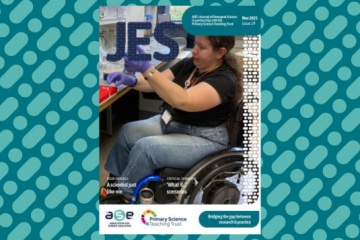JES Issue 29 out now

Check out the new issue of The Journal of Emergent Science!
Welcome to this November issue of the Journal of Emergent Science (Issue 129). Each article in this issue looks to apply research to practice, to consider how research can inform practice or how research-based principles can be enacted in specific contexts.
In the first article, Helen Harden and Nicky Waller explore how research on children’s misconceptions informed the development of new Best Evidence Science Teaching (age 7-11) resources. They note the way in which children’s common-sense explanations of the world are more likely to differ from the accepted scientific view when phenomena are unseen or invisible. For example, processes such as evaporation are invisible, making them more challenging for children to describe, hence the need for additional attention and diagnostic resources.
In the second article, Ana Leonardo and Bento Cavadas also address a topic strewn with issues of invisibility, in their study of children’s ideas about microorganisms. By discussing the beneficial, as well as the harmful, effects of microorganisms, together with observing Petri dish colonies, deeper understanding was demonstrated in the children’s later annotated drawings.
The following articles also seek to consider how research-based principles can be applied to classroom practice. Sally Howard found a disparity between teachers’ positive views of enquiry-based science and a more teacher-led enactment in the classroom, resulting from, for example, curriculum coverage and accountability pressures.
Kulvinder Kaur Johal shares her experience of developing A Scientist Just Like Me, a free online resource to support Equity, Diversity and Inclusion (EDI) principles. She describes how the search for role models moved from looking for a range of scientists, to looking for scientists whose background and accents are more similar to those of the children in the class.
Finally, drawing on research from Thinking, Doing, Talking Science and Explorify, Layla Hewitt worked through ‘What if...’ scenarios with her class, to develop their critical thinking skills. In this collection of articles, authors describe examples from particular topics, year groups and contexts. Such examples help us to think about applications in our own contexts and experiences.
The Journal of Emergent Science (JES) is an ‘open access’ biannual e-journal designed to bridge the gap between research and practice. It complements the ASE’s professional journal, Primary Science, and is supported by the Primary Science Teaching Trust (PSTT). JES focuses on research and the implications of research for practice and provision of science (including health, technology and engineering) for young children from birth to 11 years of age. JES welcomes contributions from its audience of early years practitioners, primary school teachers, teacher educators and researchers.
